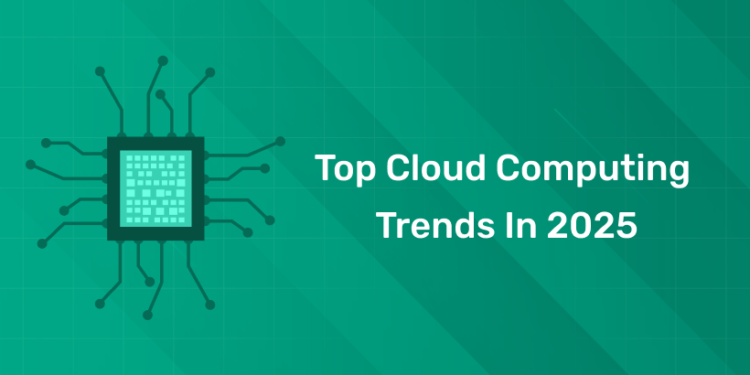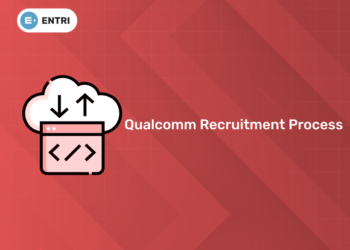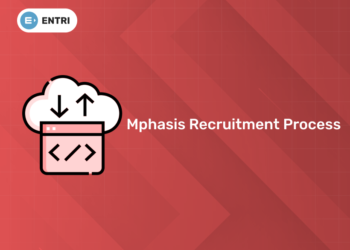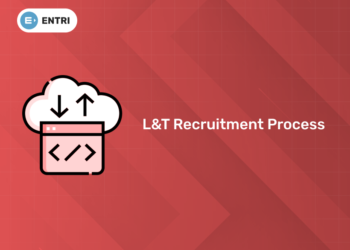Table of Contents
Imagine a world where you have heinous tasks, like cloud computing, that seem simpler. It’s time to acknowledge that the world we envision will soon become a reality. With a constant number of dynamic trends coming up every now and then, the dream is a possibility. Technology is ever-evolving, with new aspects and features taking over the world like a firestorm. In this blog, we’ll be looking at the top cloud computing trends for the year 2025.
Introduction: What is Cloud Computing?
Imagine having a computer, but instead of storing all your data in the computer, you store it in the cloud. This way you get to have access to all your files and data without any need for physical space and just with an internet connection. Examples of cloud services include Google Drive, Dropbox, Netflix, Google Photos, iCloud, etc. These services include large, powerful servers that are capable of various tasks.
Although these services largely depend on “the best cloud storage for personal use,” it can be used on a large scale as well. To sum it up, cloud computing is like renting a supercomputer over the internet instead of buying one of your own.
Master the AWS Architecture Associate Course!
Benefits of Cloud Computing
- No need for heavy hardware: All you need is your normal hardware and an internet connection.
- Accessible from anywhere: Access all and any files on the go.
- Cost-effective: Pay only for what you use and nothing more.
- Scalability: The cloud automatically adjusts its computing power depending on the task.
- Automatic Backups: All your data and the changes are automatically saved, thus no fear of losing unsaved work.
AWS Solutions Architect Associate Course
Learn AWS from Industry Leaders: Build Expertise and Accelerate Your Career!
Explore ProgramTypes of Cloud Computing
- Public cloud: A shared service used by individuals or organisations provided by a third-party provider.
- Private cloud: Personal or restricted service only for internal individuals.
- Hybrid cloud: A combination of public and private and can have access to both services as and when required.
- Multicloud: Refers to making use of services from more than one cloud computing service. This is usually for better flexibility and various work requirements.
- Infrastructure-as-a-service (IaaS): Renting virtual machines or storage (e.g., Amazon AWS cloud computing, Microsoft Azure cloud computing)
- Platforms-as-a-service (PaaS): Tools for developers to build apps (e.g., Google App Engine)
- Software-as-a-service (SaaS): Using apps online without installing them (e.g., Gmail, Canva)
- Storage-as-a-service: Storing files (e.g., iCloud, Google Drive)
Cloud Computing Trends 2025
The cloud has played a major part in changing and influencing our lives in numerous ways possible. However, 2025 is going to witness a lot more features and trends that are steadily coming to the mainstream. One can even say that the cloud may reimagine the ways in which we perceived day-to-day activities. It would be safe to say that organisations who would grasp these trends, would thrive and grow drastically.
The cloud computing trends in 2025 are:
-
AI: The Brain
AI was considered to be just another service of the cloud, providing automations of various kinds. However, 2025 witnesses a change in its nature—it is the sole governing body that optimises all the aspects of the cloud. Think about advanced features like security systems eliminating threats before they surface, allocating resources on a real-time basis, along with seamless automated scaling. Organisations that are able to implement these features would be able to reap the fruits.
-
Merging of Edge Computing and Cloud
All this while, edge computing and cloud computing had an invisible line or division. Fortunately, with the contemporary innovations, both aspects are on the way to becoming one. The fruits of this merger are going to be evident in the fields of self-driving cars—being able to make split-second decisions—and robotic surgery—reacting according to the complexity.
-
Citizen Developer
The Citizen Developer concept opens up the opportunity for exposure to connected systems to people who are not from a technical background. One such major example is If This Then That (IFTTT), which allows people without technical expertise to create customised automation. 2025 is going to witness a lot of companies investing in these functions. The leading service provider in this aspect is Microsoft’s Power platform, with AWS’ Honeycode just behind.
-
Automation
Automation acts as a secret potion for cloud computing. With companies and organisations focusing on automation, business-related services would bloom, especially in the delivery field.
-
Hybrid and Multicloud Computing
Hybrid and Multicloud types of cloud computing are slowly appearing to be the new normal. This is primarily due to the fact that these types allow organisations to use a variety of cloud computing types instead of relying solely on one. This helps in being able to adapt to new challenges or opportunities with ease.
-
Open Source Clouds
Organisations and businesses seem to prefer open-source cloud service providers over the traditional ones, majorly due to the fact that open-source cloud architecture provides more customisation at a comparatively lower price.
-
Generative AI
Cloud computing is benefitting off of the AI race, especially when it comes to generation. With innovations and milestones in GenAI, cloud computing servers can provide customised code generation.
Master the AWS Architecture Associate Course!
Conclusion
2025 will witness the redefinition of cloud computing in all possible ways. Organisations that welcome these possibilities will definitely receive a rise in their capacity for success. The larger question present in the picture is how well can businesses react and adapt to changing trends. It also provides a chance to check the stability of an organisation. If you are aiming to learn more about cloud computing, visit Entri’s Cloud Computing- Fundamentals, Types, Applications PDF for a detailed and comprehensive understanding.
AWS Solutions Architect Associate Course
Learn AWS from Industry Leaders: Build Expertise and Accelerate Your Career!
Explore ProgramFrequently Asked Questions
What is Cloud Computing?
Cloud Computing:
- It’s like renting a computer or storage space online instead of buying and maintaining your own hardware.
- You use the internet to access services like data storage, software, or servers, provided by companies like Google, Microsoft, or Amazon.
Key Features:
- On-Demand Access: Access what you need (files, apps, etc.) anytime, anywhere, using the internet.
- Scalability: Easily increase or decrease resources like storage and computing power as needed.
- Cost-Efficiency: Pay only for what you use instead of investing in expensive hardware.
- Maintenance-Free: The service provider takes care of updates, security, and repairs.
What are the types of cloud computing?
The types of Cloud Computing are as follows:
- IaaS (Infrastructure as a Service)
- PaaS (Platform as a Service)
- SaaS (Software as a Service)
- Public Cloud
- Private Cloud
- Hybrid Cloud
- Multicloud
What are the key benefits of Cloud Computing?
The key benefits of Cloud Computing are:
- Flexibility to work from anywhere.
- Saves money on IT hardware and maintenance.
- Reliable backups and security.
Are there any examples in daily life for Cloud Computing?
There are many examples for Cloud Computing in daily use. The major ones are:
- Using Gmail for emails.
- Storing photos in Google Drive or iCloud.
- Watching shows on Netflix (the videos are streamed from cloud servers).
What are the key trends of Cloud Computing in 2025?
The key trends in 2025 are:
- Development and incorporation of AI
- Merging of Edge Computing and Cloud Computing
- Features and rapid growth of projects like Citizen Developer
- Automation and its benefits
- Drastic usage of Hybrid and Multicloud by various organisations
- Preference of Open Source Cloud than the traditional ones
- Ease of use offered by Generative AI











